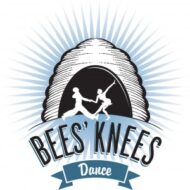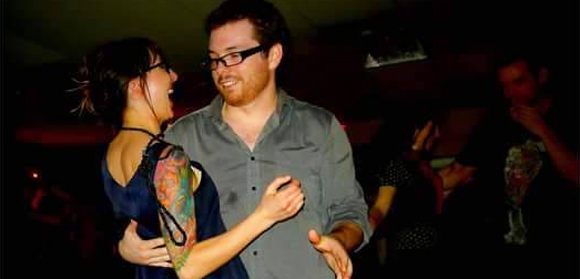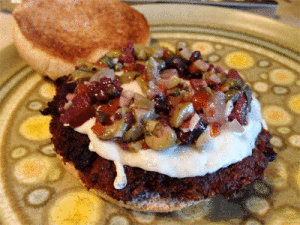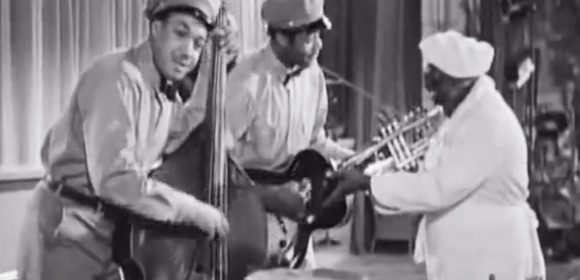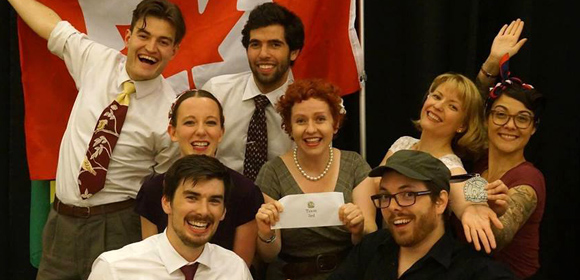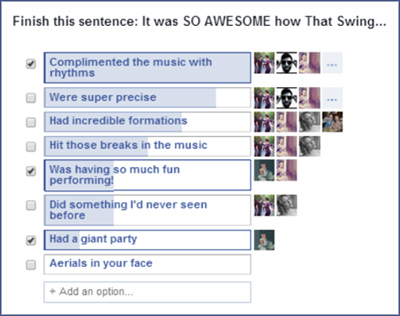–
My Own Personal Journey
Howdy folks!
Firstly, just a quick note that my tips and methodology on how I grew as a Lindy Hopper are what worked for me. You might find they work for you a lot, a little, or not at all. I only hope the following words can be of some value to you in your own personal journey.
I took my first Lindy Hop class January 14, 2007. I remember the exact date because I was immediately obsessed. I had explored other dance forms growing up but by the end of my first class in Melbourne Australia, I knew Lindy Hop would be my passion and hobby for the rest of my life. Once my visa was up 5.5 months later I changed my world travel plans and moved back to Canada where I could stay grounded and throw myself entirely at this amazing dance.
Tip #1: Take as many classes as you can (afford)
Although I hadn’t yet moved to Toronto, I commuted there twice a week from Burlington to attend classes. It was a bit of a hassle but worth it. Classes are an important source of new material that you can bring with you when you go out social dancing.
Tip #2: Social dance as much as possible
This is probably the most important tip, and the easiest. Social dancing is the whole purpose of taking lessons, as well as the root of where this dance originates. If you are newer to the scene and are intimidated by the more experienced dancers, DON’T BE. The Lindy Hop community as a whole is very inclusive and friendly, but I believe this is especially the case in Toronto (no bias of course). Never hesitate to ask anyone to dance, including me ☺ Lindy Hop social dancing is a shared experience where you are inspired by both your partner and the music. As long as we’re both trying to have a good time, it’ll be a lot of fun regardless of your level of experience. Dancing with a brand new dancer who is engaged and having fun is one hundred times better than an “expert” who isn’t. It’s just like any verbal conversation. It only works when both people are listening and contributing.
Tip #3: Bring a cheat sheet to the dance
The social dance floor presents a great opportunity to practice what you learned in class, though not at the expense of the conversation with your partner. I used to bring a cheat sheet to dances that listed a few brief points on what I was currently working on. I would take a quick peek, pick one thing, and focus on that for some or all of the evening. I would have it as a thought in the back of my mind, throw it out there once in a while and then forget about it. For more general things such as posture or what your arm is doing, you can focus on them a little more often. Again, have fun and don’t let your training happen at the expense of the person you’re dancing with. The one possible exception where you could practice a little more during a dance would be if your partner was someone you practice with regularly and they’re okay with it.
Tip #4: Find a dance partner and/or practice group
I found it difficult to find a steady partner early on but got lucky with some great ones. Nowadays Toronto’s scene has a greater number of eager dancers you can hopefully connect with. The most obvious place to meet and inquire about partnering with someone is in your regular classes. If you have great social dancing chemistry that’s also a good sign. If you’re working with someone in a performance class or troupe, you might try to extend that working relationship outside the classroom. Although regular classes offer a great place to get expert material and occasional personal feedback from your experienced instructor, working with a partner has the added benefit of constant and focused constructive feedback and the opportunity to cater the material to you and your partner’s needs. Just make sure you are both considerate of each other’s interests when utilizing your practice time and always make sure your feedback is constructive. When something isn’t going quite right with what you’re working on, be as specific as you can about the problem but without assigning blame, i.e. “I’m not feeling the stretch at the end of our Swingout”. Because you often don’t know what the issue is or who, if not both of you, is contributing to it, the best approach is to list the possible causes from the perspective of both roles. Even if you think you’re doing everything right and know exactly what your partner is doing wrong, being balanced at the onset is a more diplomatic approach and allows each person to reach their own conclusions. You’ll probably find that your original theory is sometimes incorrect.
Most people are sensitive to criticism, especially when they are trying really hard to work on something they care so much about. If you’re going to offer your opinion, always follow up by asking for theirs. Nobody is an absolute expert and both of your opinions always matter.
I find this approach to be safe, considerate, and a benefit to the long-term health of your relationship.
Tip #5: Keep track of your progress and accomplishments
When I first started practicing it was in my parents’ carpeted basement, working on jazz steps from YouTube videos I burnt onto blank DVDs. I started a Word document with the title “Solo Jazz” and began listing the moves regardless of whether I knew the actual name. If I wanted to confirm the name or had a question on how to execute the move, I’d ask my instructor just before or after class.
When I started working with partners, I extended the Word document to include other categories and greater detail, i.e. Tandem Charleston, Swingout Variations, Personal Stylings, Sugar Pushes, etc. For each move/combo/style/variation/etc., I would include a name (if possible), exact title of the YouTube video and a timestamp of where the action takes place. I would then include a brief description of how I thought it was being executed from a Leader’s perspective. When I showed up for practice I had the document and videos ready for reference on my laptop or tablet. When I stopped adding to the document about 3 years ago and began writing custom lists for each person I was working with, I was up to 63 pages. It was pretty big.
Here’s a couple examples of how I used to catalogue what I was working on. Please keep in mind that these are several years old and reflect the dancer I was at the time ☺
(from the “Texas Tommy” section of my Word doc.)
[0:40 – 2009 03 09 Heather Davis Thurber Lindy Level 3 Week 22] As soon as you pass her hand off on 5, grab it with your RH on 6, keeping your LH on her lower back. Keep the Follower anchored while you continue to rotate cw. At about 7, bring her RA to behind your back. At about 1, prep her hips cw and lead a ccw turn in the direction of stretch to your left. Try it!
(from the “Swingout Moves and Variations” section)
[0:40 – Nick & Carla au PSF 2008] Build tension by 6, lead a stretch away on 7 and lead her to jump towards you on 8. On 1, you’re both landing with forward momentum as your RH connects with her left shoulder. Lead her into an outside turn as she continues to move in your direction. As she turns, turn with her for about another 90° so that you both land facing opposite to your starting positions.
- Variation: Turn an extra 180⁰ at the end so that you land back to front. Now with a bit of a downward prep on the landing, jump up while turning and leading her 180° ccw into Tandem Charleston. [5:20 – Camp Jitterbug 2008 Lindy Hop Couples Finals] Practice
.
The Practice meant that I still needed to work on it with my partner during practice time. Try it! meant that it was ready for the dance floor.
Tip #6: Use other dancers as a source of inspiration
At this point in my dancing I’m more focused on coming up with original ideas without videos but will sometimes watch videos of the world’s top dancers for inspiration. Regardless of how long you’ve been dancing, try to assimilate what you get from other dancers as much as possible, rather than just copying things exactly.
There’s nothing wrong with “stealing” from other dancers. The great Frankie Manning pointed out that Savoy dancers did this all the time. The key is to take their move and make it your own through style, variation, addition or a combination of the three. When I first started practicing with a partner I almost never chose something to work on simply because it looked cool or flashy. I always picked something that had a movement, style, or technique that was new to me. My theory at the beginning was that if I focused on improving all of these things, I could eventually move in every way and lead anything. Of course, no matter how good you think you are there is always something to learn. This mentality, not to mention truth, is what will drive you to improve and create for the rest of your dancing life.
If you decide to use a practice methodology similar to what was mentioned above, the one piece of advice I would give is to remember that this dance is an art form, allowing you to express yourself with your own unique creativity. Begin by imitating and breaking things down but then quickly move to make the new material your own and allow it to evolve. Your dancing should be an expression of who you are and not a robotic regurgitation of what you saw on YouTube or did in practice.
Tip #7: Film Yourself
Watching yourself dance is an extremely useful thing to do. Set up a tripod or ask a friend to help. For most of us we’re much better dancers in your own heads than what is actually displayed on the dance floor. Every time I check in and watch myself dance, I see something I want to improve upon. Having your dance partner(s) critique your video can also be beneficial. Video critiquing is a great way to measure your progress, and over time you will gain a keener eye for what you’re seeing .
Tip #8: Travel
All the best dancers I’ve known are people who travel to outside dance events. There are some fantastic instructors here in Toronto and some great dancers to social dance with, however we only represent a fraction of the greater Lindy Hop community. Taking outside workshops exposes you to new teaching and learning approaches, as well as unique styles and dance moves. One instructor’s perspectives and approach to fundamental concepts might connect with you in ways you hadn’t thought of before.
Dance events typically have amazing music to inspire you, push your creativity to places you’ve never been, and can result in some of the best dances you’ve ever had. One of the best things about travelling is all the friends you’ll make along the way. The greater Lindy Hop community is massive and it’s pretty cool when you have friends from all over the world. Not only is the social dancing fun but your partners will expose you to new styles, moves, variations, etc.
There are 3 main categories of events: 1) Exchanges, which are all about social dancing 2) workshops and 3) competitions. Some events are a combination of these three. In my earlier years I focused more on workshop events because I was a sponge for knowledge. Your days are full of classes and your evenings are filled with social dancing. I dabbled in competition events but didn’t go to many until I had been dancing for about 4 years. Competition has never been a big focus for me. I’m more of a social dancer at heart. I compete a handful of times per year because it presents a different challenge and the whole process can be pretty exciting when it isn’t too serious. You might feel different about it depending on your goals. If you are an aspiring competitor, keep in mind that the better social dancer you are, the better a competitor you will be.
If you’re interested in competing, I also recommend performing. Do it with a partner and/or with a troupe. In some ways competing is performing, in that you are presenting yourself to an audience. You have to consider connecting with them in addition to your partner.
Tip #9: Explore other dance forms
To present a new challenge and refine some of my fundamental dance skills, I started taking ballet classes. I’ve also dipped my toes in Hip Hop and Breakdancing. Training in other forms of dance can improve body awareness, movement, and overall mechanics. In the modern Swing era you can see many examples of dancers incorporating other forms of dance into their Lindy Hop. I’ve seen hip hop, breakdancing, locking, modern dance, tap, tango, etc. Lindy Hop is a dance of improvisation where there is some freedom to incorporate ideas from other dance forms. The key in most cases is to do it while having it still look like Lindy Hop.
Well, I think I’ll leave it here for now. I could easily go on forever as most of my friends would agree. If you have any questions, please don’t hesitate to ask me in person. Lindy Hop and the culture surrounding it are easily the greatest things that ever happened to me. If you’re new to this dance I’m very excited for you and the adventure still ahead. It’s going to be an awesome ride. I now leave you with a couple of my favourite quotes from the great Frankie Manning.
.
“When you are dancing with your partner, for that two and a half minutes, you are in love with each other. You’re corresponding with each other by the moves that you make. It’s a love affair, between you and your partner and the music.
– Frankie Manning
I think the dance is wonderful, to me it’s a partner dance, good exercise, with a partner, it’s a joyful dance. I usually tell people, I never see a lindy hopper who is not smiling. – Frankie Manning
Question for Frankie: Frankie, these days you are The Man … how do you feel …
Frankie: I really don’t know what it’s like. I don’t feel any different from anyone else. I’m just a dancer who loves to dance and loves people. I can’t tell you. People ask me, “How does it feel to be a legend?” I feel like I feel. I don’t feel like I’m a legend, I feel like Frankie.
.

PHIL BOURASSA
THE BUZZ BLOGGER
